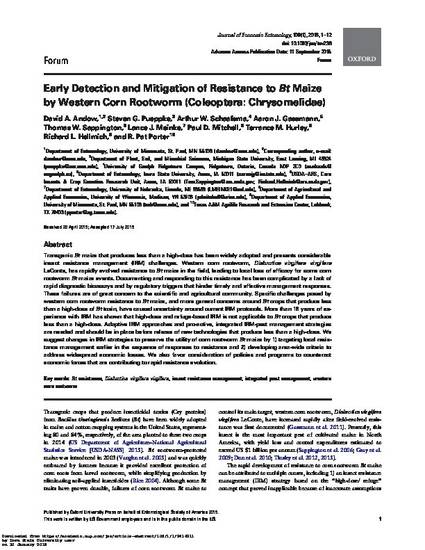
Transgenic Bt maize that produces less than a high-dose has been widely adopted and presents considerable insect resistance management (IRM) challenges. Western corn rootworm, Diabrotica virgifera virgifera LeConte, has rapidly evolved resistance to Bt maize in the field, leading to local loss of efficacy for some corn rootworm Bt maize events. Documenting and responding to this resistance has been complicated by a lack of rapid diagnostic bioassays and by regulatory triggers that hinder timely and effective management responses. These failures are of great concern to the scientific and agricultural community. Specific challenges posed by western corn rootworm resistance to Bt maize, and more general concerns around Bt crops that produce less than a high-dose of Bt toxin, have caused uncertainty around current IRM protocols. More than 15 years of experience with IRM has shown that high-dose and refuge-based IRM is not applicable to Bt crops that produce less than a high-dose. Adaptive IRM approaches and pro-active, integrated IRM-pest management strategies are needed and should be in place before release of new technologies that produce less than a high-dose. We suggest changes in IRM strategies to preserve the utility of corn rootworm Bt maize by 1) targeting local resistance management earlier in the sequence of responses to resistance and 2) developing area-wide criteria to address widespread economic losses. We also favor consideration of policies and programs to counteract economic forces that are contributing to rapid resistance evolution.
Available at: http://works.bepress.com/richard_hellmich/147/

This article is published as Andow, David A., Steven G. Pueppke, Arthur W. Schaafsma, Aaron J. Gassmann, Thomas W. Sappington, Lance J. Meinke, Paul D. Mitchell, Terrance M. Hurley, Richard L. Hellmich, and R. Pat Porter. "Early detection and mitigation of resistance to Bt maize by western corn rootworm (Coleoptera: Chrysomelidae)." Journal of economic entomology 109, no. 1 (2015): 1-12. doi: 10.1093/jee/tov238. Posted with permission.